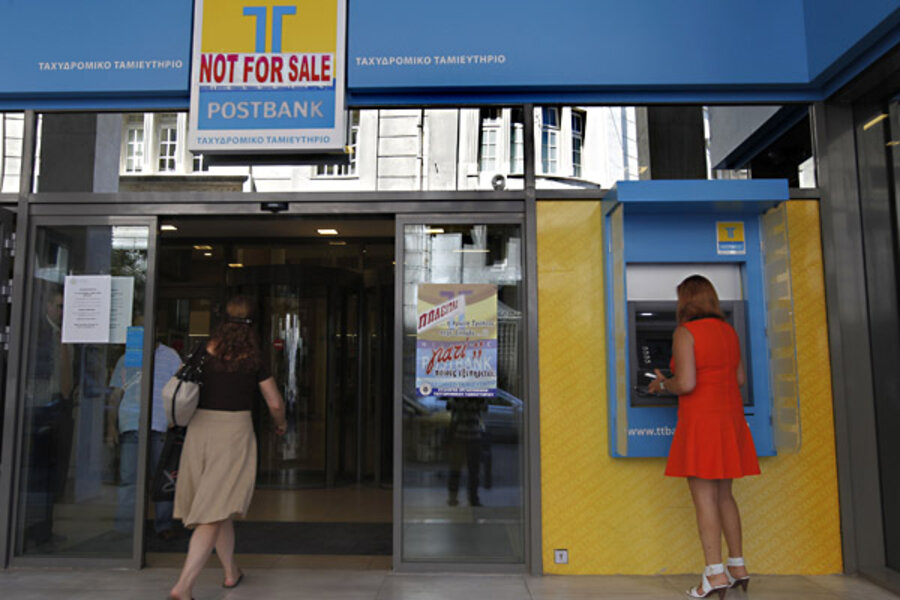U.S. banks look good compared to European ones
Loading...
It is said—by folks much snarkier than I—that European economic policy makers exist to make their American counterparts look good.
I’m not sure I’d go there but one gets the point.
The unwillingness to recognize countries that are facing fundamental insolvency versus temporary illiquidity weighs most heavily on Eurozone economies, but hits ours as well. The rush to impose austerity, the failure to differentiate the underlying debt issues between countries (e.g., Greece–a fiscal profligate–vs Spain–not!), not to mention the inability for currency to adjust —all of these and more make this crisis seem insoluble.
Over on this side of the pond, however, our banks benefit from a lot less direct exposure to the bad debt in question. Our holdings of the debt from the problem countries come to less than 1% of GDP, while France, Germany, and the UK are up around 16%.
There are of course, still many steep headwinds holding back the US economy. And US investors with European holdings (or derivatives thereof) will take haircuts if there’s a default. But our banks are in much better shape than theirs.
Back in June, I wrote the following (and I wasn’t the only one making such points):
“The more I read about the Greek debt crisis, the more convinced I become that policy makers are looking at an insolvency problem but seeing a liquidity problem. Getting this wrong is a great way to make a bad situation both worse and more protracted.
In a liquidity crunch, your banks are sitting on bad loans and are too undercapitalized to do much about it. Your credit markets freeze and your economy tanks. But your government and central bank are able to leap into the lurch and become the banking system for a while, reflating the private system until it can run on its own again. That’s pretty much what the TARP did.
For something like that to work—and I’m not saying it was the best or only way for us to have gone—a few things need to be in place. Your government must be able to reliably borrow at favorable rates (and lenders must believe you can later pay them back), your banking system must be able to get back into borrowing and lending markets once their balance sheets recover, and if your currency can adjust to help boost external growth, that’s nice too. [I should have added that you need a functioning tax system.]
If none of those things are in place, misdiagnosing insolvency as illiquidity can prolong a disaster and waste a lot of money along the way. I would argue that these conditions were, in fact, present in the US case. They are not in the Greek case.”
The key now is an orderly restructuring of Greek debt—think GM/Chrysler, not Lehman. That means telegraphing what’s going to happen, who’s going to lose how much in terms of “cents of the dollar,” how long the restructuring will take. It will be ugly but it’s already ugly. An orderly default, along with a once-and-for-all commitment to reflate and recapitalize other Eurozone economies that meet the criteria I laid out above, may be the only way to get the ugliness out of the system.





